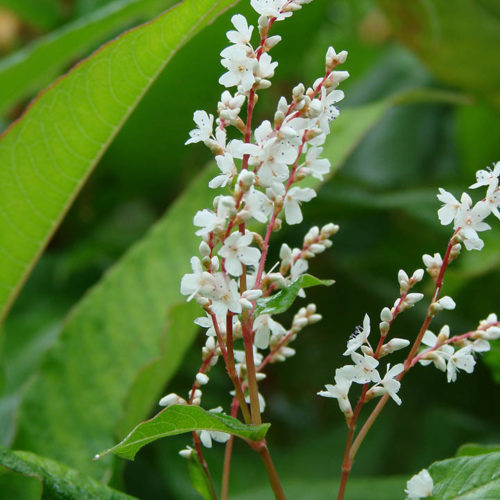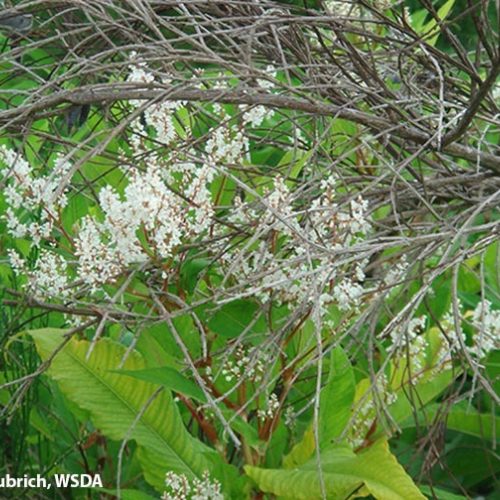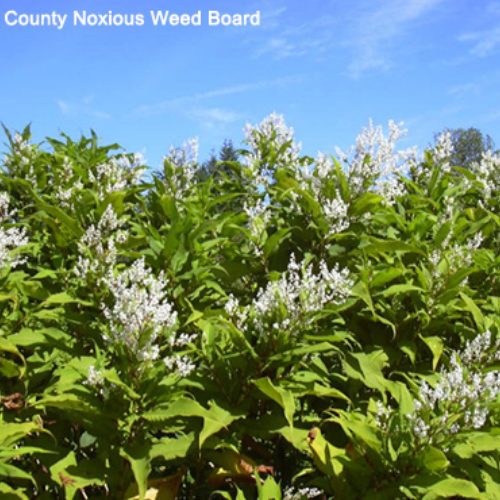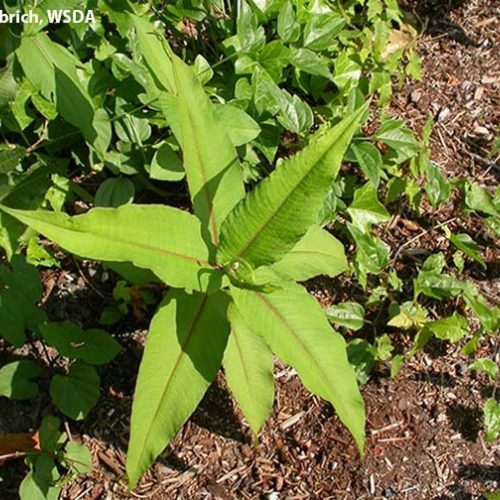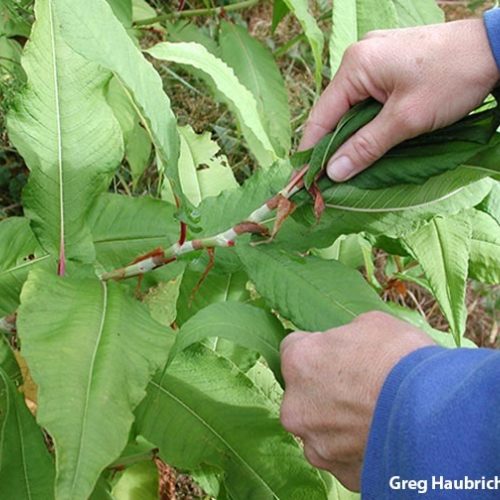Himalayan Knotweed
Persicaria wallichii

Family: Polygonaceae
Other Scientific Names:
Polygonum polystachyum, Koenigia polystachya, Rubrivena polystachya
Other Common Names: bell-shaped knotweed
Weed class: B
Year Listed: 2003
Native to: Asia
Is this Weed Toxic?:
not known to be
Legal listings:
This plant is also on the Washington State quarantine list. It is prohibited to transport, buy, sell, offer for sale, or distribute plants or plant parts of quarantined species into or within the state of Washington or to sell, offer for sale, or distribute seed packets of seed, flower seed blends, or wildflower mixes of quarantined species into or within the state of Washington. Please see WAC 16-752 for more information on the quarantine list. For questions about the quarantine list, contact the Washington State Department of Agriculture's Plant Services Program at (360) 902-1874 or email PlantServices@agr.wa.gov.
Why Is It a Noxious Weed?
Himalayan knotweed grows vigorously into dense colonies that exclude native vegetation, alter natural ecosystems and are difficult to eradicate. It poses a significant threat to riparian areas, where plants can survive severe floods. Small fragments can form new plants.
How would I identify it?
General Description
Himalayan knotweed is a clumping perennial with large leaves, hollow stems, and long creeping rhizomes. It is not usually confused with other knotweeds—it is recognized by its long slender leaves. It can grow to about 6 feet in height.
Flower Description
Flowers are showy, pinkish, and fragrant with clusters borne at tips of branches.
Leaf description
Leaves are leathery, alternate, 5 to 12 inches in length with sharply pointed tips. They have slightly heart shaped to tapered bases.
Stem description
Stems are smooth and upright with twigs that zigzag slightly from leaf node to leaf node. They are reddish-brown at maturity.
Fruit Seed Description
The small 3-sided achenes (seeds) have the old sepals attached and are smooth.
May Be Confused With
Our invasive knotweed species can resemble each other; Himalayan knotweed can be distinguished from the others by its long slender leaves. If you need help with plant identification, please contact your county noxious weed coordinator.
Where does it grow?
Himalayan knotweed can be found on disturbed moist sites, roadsides, riparian and wetland areas. Please click here to see a county level distribution map of Himalayan knotweed in Washington.
How Does it Reproduce?
Himalayan knotweed reproduces vegetatively from rhizomes and by seed. Each node on the plant is able to produce roots and new plants. New plants can sprout from fragments as small as 1 inch.
How Do I Control It?
General Control Strategy
Controlling invasive knotweed species typically takes a number of years and monitoring the site for regrowth is critical. Care must be taken not to produce new plants. All plant material should be removed and properly disposed of as new plants can sprout from very small fragments. Check with your county noxious weed control board about how to best dispose of plant parts. Plants can be dried and burned but make sure to check with local burning restrictions and if any permits are needed.
Mechanical Control
Grubbing out small clumps when discovered can prevent new colonies from establishing but is time-consuming. Rhizomes and fragments left in the ground, or nearby, can regenerate and spread infestations. The entire root system must be removed since re-sprouting can occur from rhizomes. Frequent, repeated cutting of plants over many years can eventually kill the plant. Covering plants with a thick landscape fabric for up to 5 years may provide control. Fabric should be installed after cutting plants back to the ground, provide some give in the fabric so new stem growth won't puncture through, monitor fabric and flatten knotweed growth under it, keep fabric cleared of debris, and repair any holes.
Biological Control
There are currently no registered biological control agents for use on any of of invasive knotweed species. Grazing may provide some reduction in plants but additional control methods are typically needed. Any grazing strategy should be carefully controlled to prevent damage in riparian areas.
Herbicide Control
Please refer to the PNW Weed Management Handbook, or contact your county noxious weed coordinator.
For More Information
See our Written Findings for more information about Himalayan knotweed (Polygonum polystachyum).
Report on knotweeds from the book "Weed Control in Natural Areas in the Western United States"
King County NWCB Fact Sheet on Himalayan knotweed
Whatcom County NWCB Fact Sheet on Himalayan knotweed






